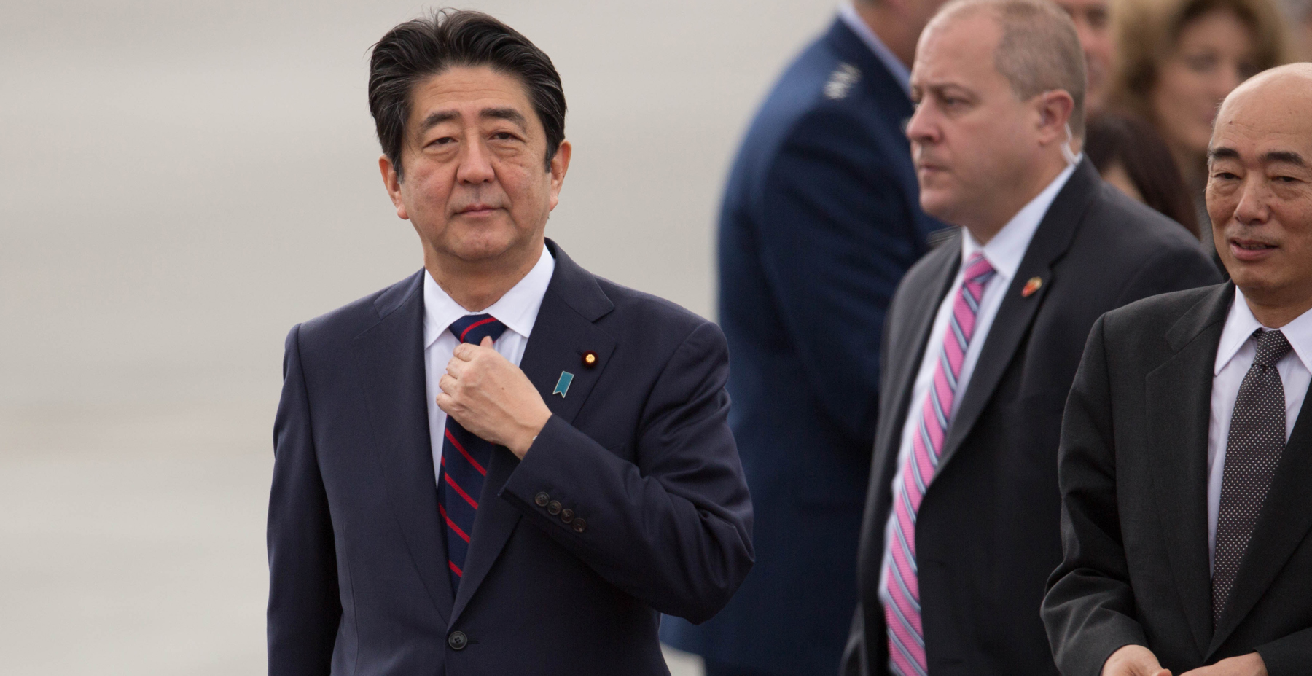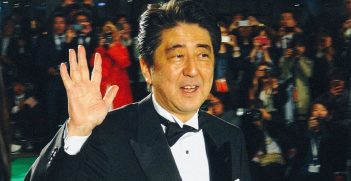Abe’s Lasting Strategic Legacy in the Indo-Pacific

Former Prime Minister Abe Shinzo developed a coherent and comprehensive strategic vision. It not only precipitated Japan’s emergence as a primary player in the Indo-Pacific but also the strategic choices of other regional states, including the United States, Australia, and India.
Donald Trump’s “America First” vision viewed US alliances as financial burdens rather than as strategic assets, presenting Japan with the prospect of its primary security guarantor dramatically upping the cost of protection or becoming an unreliable ally. This was an important factor in the recalibration of Japan’s national security strategy, tipping the balance further towards greater strategic autonomy and independent regional security initiatives and away from a singular focus on Japan’s bilateral security dependence.
In its origins, however, this new direction in Japan’s regional strategy predated Trump and was set by former Prime Minister Abe Shinzo during his first administration in 2006-07. Abe catalysed and refined the strategy in his second administration during the Trump years.
The first iteration can be traced back to Abe’s 2006 book Towards a Beautiful Country (Utsukushii kuni e), published just before he first became prime minister in that year. In the book, he argued the case for Japanese leadership in establishing high-level strategic dialogue amongst “the Asia-Pacific democratic G3 (Japan, India and Australia) plus America.” The objective was to promote greater cooperation and common values in the region.
In 2007, Abe then took the first major practical step towards realising this goal by repurposing the US-Japan-India-Australia response to the 2004 Indian Ocean tsunami into a quadrilateral working group involving meetings and naval exercises – the so-called Quadrilateral Security Dialogue (Quad). The group of four held its first meeting on the sidelines of the ASEAN Regional Forum in May 2007, preceded by the first-ever joint Japan-US-India naval exercises close to Japan. All four Quad members (plus Singapore) later participated in naval manoeuvres in the Bay of Bengal.
Abe also alluded to the Quad’s wide geographic scope in his “Confluence of the Two Seas” speech to the Indian Parliament in August 2007. It described a “‘wide, open, broader Asia’ spanning the entirety of the Pacific Ocean, incorporating the United States and Australia. Open and transparent this network will allow people, goods, capital, and knowledge to flow freely.”
Five years later, in the same month that he became prime minister for a second time (December 2012), Abe elaborated on the Quad’s rationale and shared values in an opinion piece advocating the creation of a “democratic security diamond” (DSD). He envisioned the “Security Diamond Quad” countries as a group of democracies with the task of defending peace, stability, and freedom of navigation in the Pacific and Indian Oceans against Chinese predations. Clearly, from the outset, it was Abe who envisioned the Quad’s strategic, ideological, and geographic foundations and potential with the DSD representing “a democratically framed revival of the Quad.”
Moreover, although this first iteration as “Quad 1.0” came to a premature end in 2008, Abe’s commitment to the idea that the Indian and Pacific Oceans were inextricably linked in a strategic arc and that the region should be “free and open” culminated in his launching of a “free and open Indo-Pacific” (FOIP) strategy for Japan in 2016. In his 2016 address to the Sixth Tokyo International Conference on African Development, he referred to Japan’s responsibility for “fostering the confluence of the Pacific and Indian Oceans and of Asia and Africa into a place that values freedom, the rule of law, and the market economy, free from force or coercion,” each a direct counter to China.
Abe’s FOIP concept and initiative has informed Japan’s foreign, foreign aid, foreign investment, foreign military assistance, defence and security policies, and relations in the Indo-Pacific region and beyond. As Katahara argues, based on Abe’s FOIP vision, Japan’s 2018 National Defence Program Guidelines emphasised Japan’s strategic pursuit of bilateral, trilateral, multilateral, and multifaceted international security cooperation involving training and exercises, defence exchanges, maritime security, capacity building assistance, defence procurement and technology, and international peace cooperation activities. Moreover, it expanded the geographic focus of Japan’s defence and security policy to include the entire Indo-Pacific region.
Importantly, it has also had a wider impact, informing strategic and foreign policy thinking more broadly in Indo-Pacific nations, particularly amongst the members of the Quad (now Quad 2.0, relaunched in 2017) for which it now provides a unifying ideational construct, particularly in dealing with China and its challenges to maritime boundaries and international law. Moreover, it has indirectly influenced the security policy choices and strategies of other nations outside the Quad and has the potential to reshape the security architecture of Indo-Pacific Asia.
Perhaps most significantly, in a reversal of roles, the US administration followed Japan’s strategic leadership in rolling out the Indo-Pacific concept in 2017. During his visit to Asia in November 2017, Trump unveiled his vision of a “Free and Open Indo-Pacific” as the US approach to Asia. This was followed by Secretary of State Mike Pompeo’s elaboration of the strategy at a Business Forum of the US Chamber of Commerce in Washington in 2018. American goals for the Indo-Pacific were also contained in documents such as the 2019 Department of Defense Indo-Pacific Strategy Report, the 2019 State Department report on “A Free and Open Indo-Pacific: Advancing a Shared Vision,” and the 2018 “US Strategic Framework for the Indo-Pacific” just released in January 2021. As a “shared vision,” the FOIP now more strongly underpins the US-Japan alliance and a broader US-Japan partnership in various areas including maritime security.
By officially adopting the concept, the Trump administration was able to say that it was working in concert with Japan’s free and open Indo-Pacific vision. Trump himself verbalised on the FOIP concept, declaring a commitment towards a “free and open Indo-Pacific” and using it to castigate China’s militarisation of the South China Sea. Indeed, his administration’s Indo-Pacific policy represented one clear, continuing, and consistent foreign and security policy stance amid the generally incoherent policy mess he inflicted on Japan and the region and on other long-standing allies that had to navigate their way through it. In the dying days of the Trump administration, the US government even awarded Abe the “Legion of Merit” for his “leadership and vision” on the FOIP initiative.
Who was leader and who was follower on this strategy has not always been acknowledged by the US side, however. As one senior US government official stated, “Prime Minister Abe’s vision of a free and open Indo-Pacific aligns closely with the president’s, and by working together, our two great nations have significantly advanced this shared vision. We look forward to working with Prime Minister Abe’s successor in further strengthening our nations’ ties and advancing our shared goals.” Nevertheless, in the wake of Trump’s demise, the Biden administration is showing every sign of continuing to follow Abe’s Indo-Pacific vision as a guiding principle, particularly in responding to China’s increasingly hegemonic behaviour.
Some of Abe’s greatest achievements were incontrovertibly in diplomatic and strategic affairs. In this context, he can claim rightful ownership of the “free and open Indo-Pacific” strategy and its pairing with the Quad for which he also served as the “real architect.” For Japan, this entailed a fundamental shift from security bilateralism to security multilateralism and the adoption of an important role in strengthening an international rules-based order in the Indo-Pacific. More broadly, Abe’s contribution was to reshape strategic thinking in regional affairs, influencing not only his country’s strategic choices but also those of other nations, including Japan’s primary security ally and other security partners.
Aurelia George Mulgan is professor in the School of Humanities and Social Sciences, University of New South Wales, Canberra. Her research touches on many aspects of Japanese politics, political economy, and foreign and defence policies.
This article is published under a Creative Commons Licence and may be republished with attribution.





